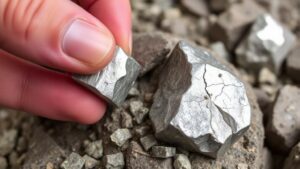How to Design Underground Ore Bins for Long-Term Use
How to Design Underground Ore Bins for Long-Term Use
Designing underground ore bins for the long-term storage and handling of ore is a critical component in mining operations. A well-designed ore bin can maximize efficiency, reduce maintenance costs, and improve the overall safety of underground mining operations. This article will cover the essential considerations, techniques, and best practices for designing underground ore bins that stand the test of time.
Understanding the Function of Ore Bins
Ore bins serve several key functions in mining operations, including:
- Storage for mined ore until it can be processed.
- Facilitating the controlled discharge of ore to processing facilities.
- Minimizing dilution of the ore by managing the flow of materials.
These functions imply that the design of ore bins must account for material properties, operational requirements, and structural integrity over time. A poorly designed ore bin can lead to operational inefficiencies, increased wear and tear, and potential safety hazards.
Key Design Considerations
When designing underground ore bins, it is essential to consider a variety of factors, including:
- Material Properties: Different ore types have varying densities, moisture content, and flow characteristics, necessitating custom bin designs.
- Bin Geometry: The shape and size of the bin must facilitate the efficient flow of ore, considering factors such as automation and gravity discharge.
- Long-Term Stability: Structures must be designed to withstand subsidence, seismic activity, and other geological stresses over their operational lifespan.
- Maintenance Access: Designers should create accessibility to all parts of the bin for regular inspections and maintenance.
Material Selection
The selection of materials for constructing underground ore bins is crucial for durability and performance. Common materials include:
- Steel: Often used for its strength and resistance to wear. Steel liners can be installed to reduce abrasion and extend the bins lifespan.
- Concrete: Offers excellent compressive strength and can be reinforced to handle significant loads while minimizing the risk of collapsing.
- Polymer Liners: Provide wear resistance and can be used in combination with other structural materials to enhance durability.
Choosing the right materials should involve a detailed analysis of the expected loads, ore characteristics, and environmental conditions.
Flow and Discharge Mechanisms
The flow of ore from the bin to the processing system requires careful planning to prevent blockages and maintain consistency. Various discharge mechanisms are available, including:
- Gravity Discharges: Simple and effective, gravity discharges rely on the force of gravity to release ore. Proper sloping of the bin walls increases the discharge rate.
- Vibrating Feeders: Converts potential energy in stored ore into kinetic energy, ensuring controlled release with reduced friction.
- Augers and Conveyors: Useful for moving larger volumes of ore or handling materials with varying flow characteristics.
Selecting the right mechanism reduces the risk of spillage and aids in maintaining ore quality.
Case Studies of Successful Ore Bin Designs
Several mining companies have successfully implemented innovative ore bin designs that highlight best practices. For example:
- Xstrata Coppers Mount Isa Operations: This facility used reinforced concrete bins with advanced monitoring systems that track ore levels and flow characteristics, allowing for real-time adjustments and reducing downtime.
- Norilsk Nickels Nornickel Complex: Useed a combination of steel and polymer-liner technology to handle nickel ore, which has high abrasive qualities, significantly extending the service life of their bins.
Environmental and Safety Considerations
Designing underground ore bins must also include considerations for environmental impact and worker safety. Potential issues to address include:
- Dust Control: Useing dust suppression techniques such as water sprays or fog systems can help minimize air quality issues.
- Noise Pollution: Utilizing sound-absorbing materials or designs can mitigate noise generated from ore handling.
- Emergency Egress: Designing bins with accessible escape routes enhances worker safety during emergencies.
Conclusion: Best Practices for Design
The design of underground ore bins is an intricate process that requires a thorough understanding of ore characteristics, material properties, and operational needs. By focusing on long-term stability, flow mechanisms, and safety considerations, mining operations can create efficient and reliable storage solutions. Key takeaways for effective bin design include:
- Conduct a detailed analysis of ore type and volume to inform design choices.
- Invest in quality materials that suit the specific demands of the mining environment.
- Use regular maintenance routines and monitoring systems to extend the life of the ore bins.
By adhering to these principles, mining companies can ensure that their underground ore bins will provide safe, efficient, and sustainable performance for years to come.


